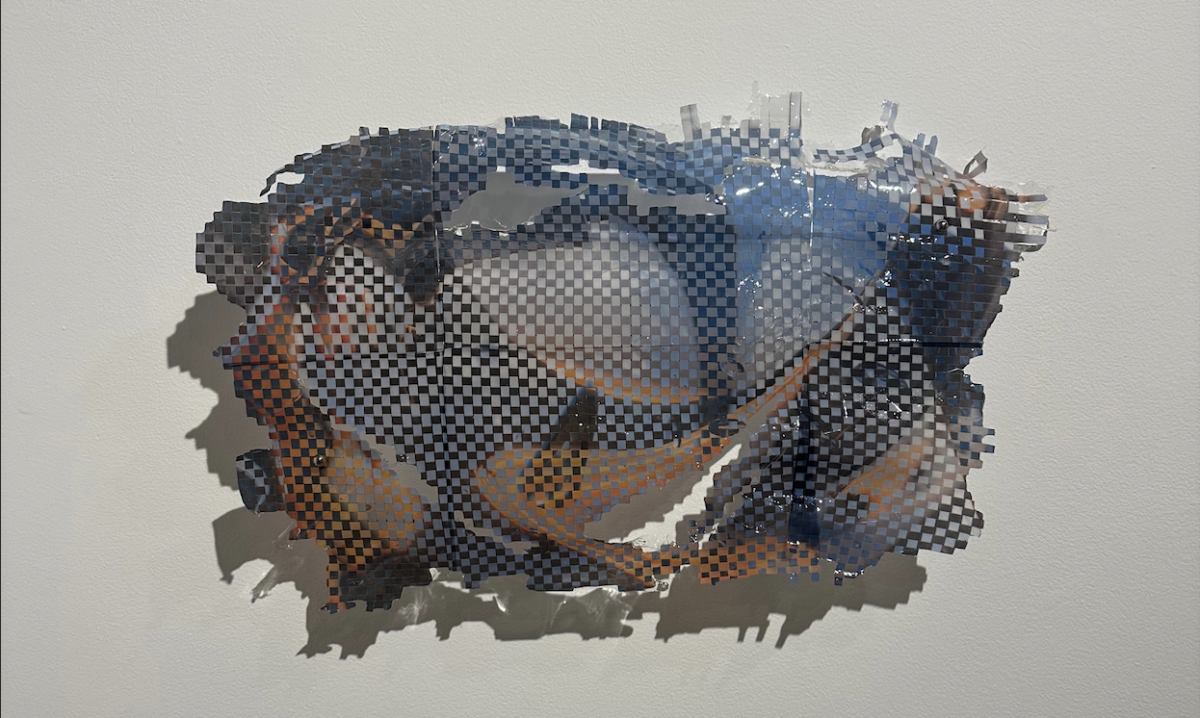Walking into the exhibit titled “Liquid Lines” last Friday, I wasn’t expecting a blend of contemporary media, unconventional materials and styles, and the idea of transcendence from morality in front of me. Wandering through large silk screens past wavy resin-soaked abstracts, and around woven pictures, I was confronted with something I couldn’t quite interpret on the first pass. It went beyond the surface of the pieces, and the more I looked, the more it was clear that there was a story being told.
“Liquid Lines” is a collaborative exhibit between two Wellesley alums: Breslin Bell and Juyon Lee, both from the class of 2018. It was on display from Nov. 1 to Dec 8. from 10 a.m. to 5 p.m. daily in the Jewett Art Center. The artists were two of the carefully selected recipients of the 2022-23 Alice C. Cole ’42 Studio Project Grant, a financial award intended to provide funds that will contribute to recent Wellesley College graduates artistic ventures. The grant allows former students to devote time to their craft, and often encourages the development of a project or exhibit. It was named after a fellow Wellesley artist, who said the award was intended to give students an uninhibited chance to “stimulate creativity and allow time to focus on career objectives;” from the looks of Bell and Lee’s exhibit, that money was not put to waste.
Both Bell and Lee have made waves in the art world before creating this show together. The former earned her MFA from the Rhode Island School of Design, and has been exhibiting around the world in various group exhibitions since 2016. She has done residencies at places like Mass MoCa and The Center for Contemporary Printmaking, and she is currently teaching as a member of RISD’s faculty. Meanwhile, the latter earned her MFA from Tufts University, has been exhibiting in galleries such as Tufts University Art Galleries, Emerson Contemporary and Collar Works, and has participated in extensive residencies, such as ones at The Studios as Mass MoCA, Anderson Ranch Arts Center and the NARS foundation.
I had the pleasure of talking with Juyon Lee at the exhibit’s closing reception on Dec. 8 and she gave me some insight on both her creative process and the overall message she is trying to convey. She started by talking about how her interest in art first began. Lee said making art was always “instinctual to [her],” but Wellesley helped shift her understanding of what her art could do, and how deep its influence went. She especially cited Professor Daniela Riveria’s class, saying it changed art into something more unconventional and pushed her to focus more on the phenomena of the world rather than the technique. Lee’s art was able to grow with her at Wellesley, and her experiences in the art department continued to affirm her artistic passions.
She then transitioned to talking about her passions in art; more specifically, what she looks to communicate through her pieces. She said that she’s “very interested in this idea of transience and ephemerality and using, and talking about that through material — physical material.” To Lee, it is all about what is beneath the surface of her pieces, and how the physical creation of each one relates to the abstractness of morality and transcendence. For example, in the long silk hangings, she took pictures of random objects clashing and then hung the still on the ceiling to give the impression of a “moving environment with silk.” Or, as she pointed to other pieces on the wall, she talked about how they were a part of a series called “Wet Photographs.” She would weave two images together in a simple pattern, and then pour resin over it; hence the “Wet” part of the title, which refers to, as she says, “the moment when the paper, the photo paper, is in contact with resin. So the resin would wet it, but then it kind of perpetuates this wetness.” It’s capturing movement, lines, shapes and curls that catch a frozen moment in time, and thinking about how our own perception of time and space is constantly in flux.
As we wrapped up, standing among her many representations of that flux, I asked her if she had any advice for current Wellesley artists, or just students in general.
“The importance of being part of a good community,” she answered. “Having a good community where it doesn’t have to be just artists, like it could be just people with similar values or interests. And those people are the ones that actually, I think, really help you keep going.”
Hopefully, with their community behind them, we will continue to see young artists like Bell and Lee reach their potential; and, perhaps, return to their old stomping ground at Wellesley one day, looking to help future students transcend morality for a moment.




